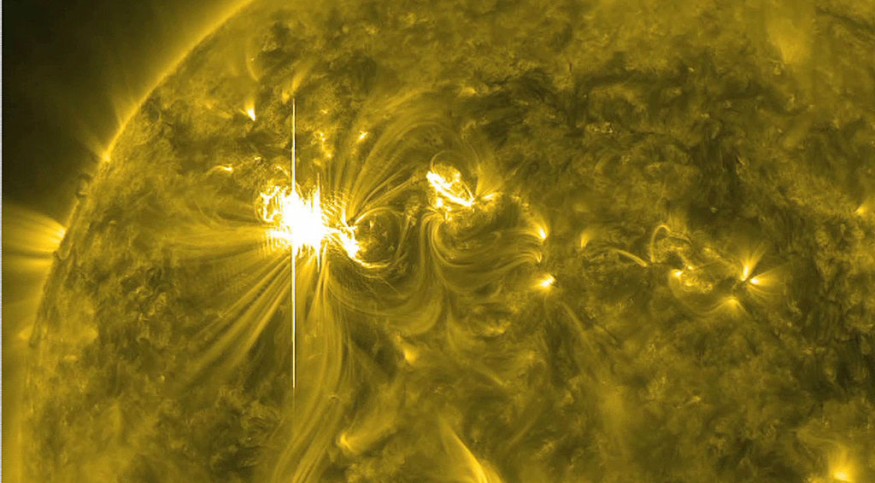This week, Earth may be able to observe the aftermath of a MASSIVE explosion that occurred behind the Sun. According to specialists at spaceweather.com, the combustion sent solar material into space.

Solar Eruption
The solar explosion immediately created a "new and active" zone behind the sun's southeast limb.
According to Space Weather Live, solar filaments are ionized gas clouds located above the solar surface between magnetic areas of the opposite polarity.
Recently, this magnetism has culminated in "a slow-moving CME," or coronal mass ejection.
CMEs Reaching Earth

A powerful burst of high-energy radiation from the sun's surface is known as a CME.
Because of how they affect things like radios and satellites, solar storms may interrupt life on Earth.
Each solar storm that affects Earth is given a severity rating, with the anticipated handful only being considered "G1-class."
This implies that they may have little effect on satellite communications and weakly perturb the electrical system.
Some creatures that depend on the magnetic field for orientation might also become confused by solar storms. Some migratory birds and even whales fall within this category.
Solar storms can also create stunning natural light displays like the northern lights.
The Earth's magnetosphere is subjected to solar wind bombardment, resulting in the green and blue displays known as auroras.
Although it can't completely prevent them, solar flares assist in shielding us from their more severe effects.
The Sun has begun one of its 11-year solar cycles, during which eruptions and flares often get more dramatic and powerful.
There are presently more solar flares as solar activity rises.
Solar Flares
Large explosions from the sun's surface known as solar flares produce powerful electromagnetic radiation bursts. What category a flare falls under depends on how powerful the explosion is. A-class flares are the smallest, while M-, C-, and B-class flares are the most powerful.
According to the University Corporation for Atmospheric Research, these flares can be seen as intense flashes in a specific area of the sun and can linger for many minutes (UCAR).
Solar flares happen when magnetic energy accumulates in the solar atmosphere and is abruptly released. The solar cycle, an approximately 11-year pattern of solar activity governed by the sun's magnetic field, is responsible for these outbursts.
The solar cycle is a term used to describe an approximately 11-year cycle of solar activity caused by the sun's magnetic field. It is observable on Earth as the number and intensity of sunspots.
In an Active Solar Cycle
Solar cycles are predictable yet repetitious. A cycle's length and intensity vary significantly, from eight to fourteen years. According to a solar cycle 25 article(opens in new tab) from NASA, the current cycle, known as solar cycle 25, started in December 2019. Solar activity is anticipated to increase up to the estimated solar maximum in 2025.
Due to higher radiation exposure, greater solar activity puts satellites, spacecraft, and even humans doing spacewalks at risk. According to NASA, the powerful geomagnetic storms that solar activity causes can disrupt Earth's GPS and high-frequency radio communications.
Related Article : Can We Survive a Catastrophic Solar Storm? What to do When a Solar Flare Hits Earth
For more cosmic news, don't forget to follow Nature World News!
© 2025 NatureWorldNews.com All rights reserved. Do not reproduce without permission.





